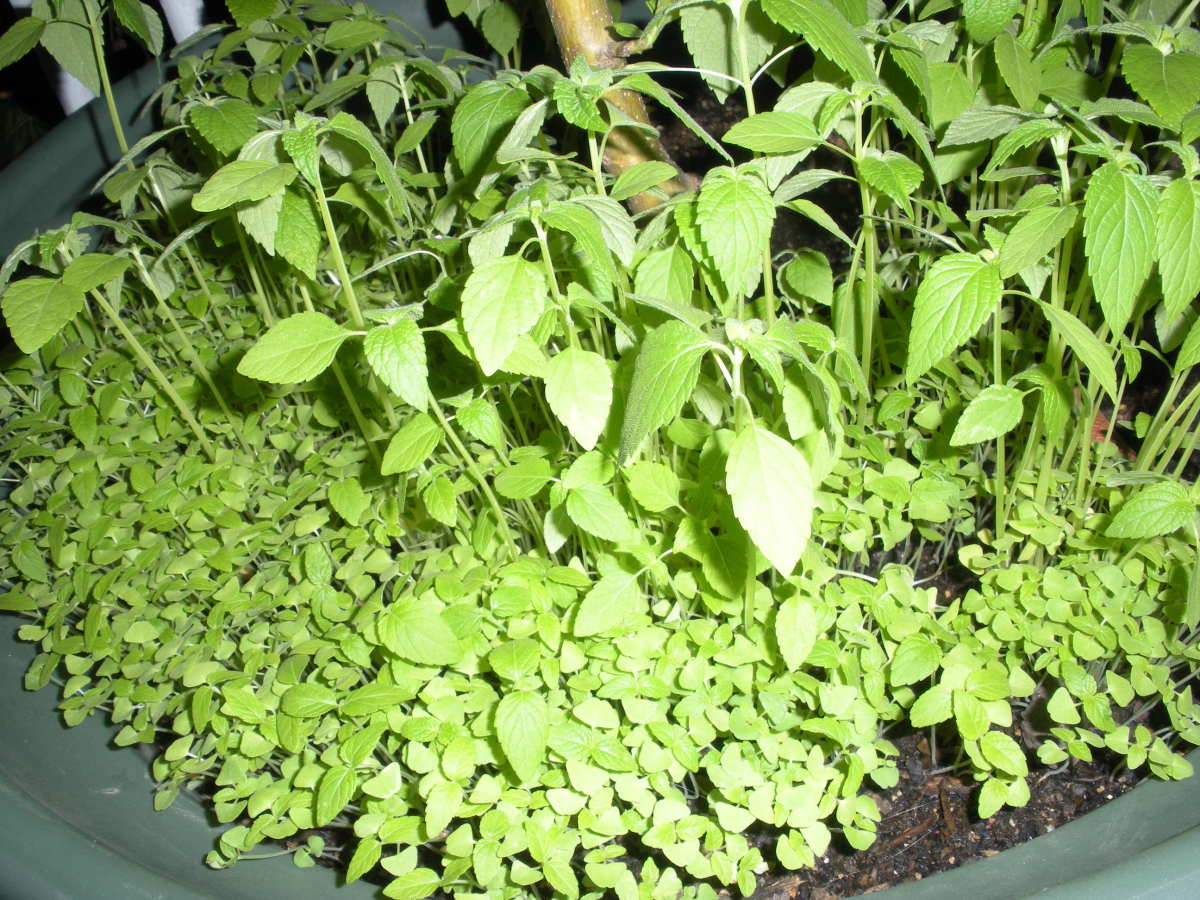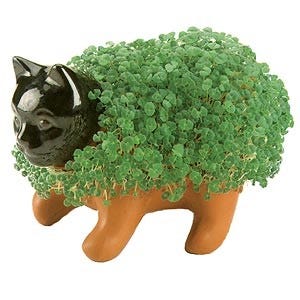How To Grow Chia Seeds
Chia seeds are a great source of nutrients and have been used for thousands of years. However, many people don’t know how to grow them at home.
In this article, we will show you everything you need to know about growing chia seeds from the comfort of your own home. We’ll start by talking about what they are, where they come from, and why they’re so good for you before moving on to how exactly to grow these tasty little treats in your garden or even inside if it’s too cold outside.
What are Chia Seeds?
First things first, let’s talk a bit about what Chia Seeds are. They’re tiny black or white sprouts from the Salvia hispanica plant, native to Mexico and Guatemala. The Aztecs were said to eat these plants as early as 900 AD but didn’t catch on until recently when health nuts started touting their nutritional benefits all over social media sites like Instagram and Pinterest.

Image caption: https://assets.bonappetit.com/
Chia seeds are rich in Omega 3 fatty acids, fiber, and antioxidants. Because they’re so rich in dietary fibers, they’re great for keeping your digestive system regular. Many people also like to sprinkle chia seeds on top of yogurt or cereal because they act as tiny little sponges that soak up all the liquid around them, which helps to prevent soggy breakfast foods.
The Chia plant has several stems arising from its base. During late spring or early summer, the chia plant will start to grow flowers. Each set of these flowers produces a seed head of tiny gray or brown seeds. The seed heads look like dandelions.
After harvest, the seed heads are allowed to dry in the sun. Once they are dry, they are either threshed by hand or machine to remove the seeds from the inside of the flower head. The seeds are then cleaned and dried again.
Black and White Chia
When you see black and white chia in the store, note that they don’t come from different varieties. They both come from the same species of plant, but they grow under different conditions. Black Chia, which is dark purple/blue/black, comes from the coastal regions where it gets more rainfall and summers are warm. White chia, on the other hand, comes from desert regions with hot, dry summers.
You may also see dessert chia or golden chia, known as salvia hispanica, the same species as black and white chia. However, it can’t be used in drinks since its sweet flavor won’t go well with liquids. Chia seeds can also be planted to grow chia pets or plants. When they sprout, the roots will hold onto a figurine to make it stand upright. However, the sprouts won’t last for very long.
When to Plant Chia
The Chia plant does well in USDA zones 8 to 12. Frost may kill immature plants and prevent flowering on mature plants. However, you can still plant your chia as an annual if you don’t live in these zones. Chia plants need warm temperatures and full sun to start glowing.
Chia seeds also prefer sandy, well-drained soil. They can’t stand wet feet because they are prone to rotting. They are also sensitive to extreme temperatures, so before planting the seeds, make sure that your gardening soil is not too hot or cold.
When to plant chia seeds depends on the time of the year and the type of seeds you have. If you are growing chia in a container, make sure to transplant it when the outdoor temperature is warm enough. Chia plants will grow slowly in cold conditions. You can also start planting indoors in 4-inch containers about two weeks before the last frost date for your area.
How to Plant Chia Seeds
You can purchase chia seeds from the supermarket and use them to plant or buy organic chia seeds from a health food store. Chia seeds do well in small containers which have good drainage holes at the bottom. Fill the container with potting soil up to an inch below the rim.
Now you are ready to place the seeds on top of the soil. Don’t worry about spacing; just spread them evenly in a thin layer across the surface. Smooth out so that your seeds are all at the same level, and press gently with your hand to secure them in place. Sprinkle chia seeds on the surface of the potting soil and cover with a thin layer of more soil.
Do not plant too deeply, or you will lose some seeds below the surface as they need light to germinate. Chia seed is so small that it can be hard to see and space evenly. Keep these tips in mind for the best results.
Planting Chia in Microgreens
If you don’t want to plant your seeds in the garden but still want to enjoy the health benefits of chia, use sprouts as microgreens. Place your seed raising mix in a shallow, wide container, then sprinkle chia seeds over the surface and cover with a ¼ inch layer of more seed raising mix. Keep moist, not wet, until your seedlings emerge.
How to Care for Chia Plants
When it comes to harvesting chia plants, they’re easy to grow and require low maintenance. You can use both the leaves and seeds in your recipes if you don’t have a garden, plant chia outside in the partial shade or in containers where it will get at least 6 hours of sunlight per day.

Image caption: https://images.saymedia-content.com/
Light
Chia plants do well in full sun. They’re very tolerant of hot weather because they can go for several weeks without water. Avoid planting your chia plants in the afternoon because the leaves will be burned by the hot sun.
Mix and Soil
The right soil is just as important as other strategies to grow healthy chia plants. Use a potting mix combined with perlite or sand for optimal drainage. Chia thrives on a wide range of soil conditions. Good drainage is also important as chia plants don’t like wet feet.
If growing your chia in pots, use a commercial potting mix combined with sand or perlite. Then use unglazed terra cotta pots for the best drainage. Terra cotta pots are porous and will absorb moisture, which will increase humidity around your chia plants. For outdoor planting, use topsoil mixed with sand or compost. No need to test soil pH as chia seeds can do well in all soil types.
Water
Chia seeds are very drought tolerant. In that case, you need to water them only when the soil is dry. Bear in mind that they need water whenever their leaves look wilted and start to curl up. During the blooming phase, chia plants require abundant watering (it’s like with humans). However, wait until their second set of true leaves develops before you begin watering them regularly.
How to Sprout Chia Seeds
Besides being essential fatty acids, chia seeds sprouts are also a natural source of linoleic acid that strengthens hormones. Chia seeds are also a natural source of linoleic acid that prevents the hardening of blood vessels. They also help to lower cholesterol and high blood pressure.
The Covered Moisture Method
In this method, you’ll need a bowl and a piece of cloth. You can use a paper tray or plastic tray, but you can use whatever works for you. This is to cover your growing seeds so that they don’t dry out.
The Terra Cotta Tray Method
This requires more work than the covered method, but it has better results. You can use a plastic tray again, or you can opt for a terra cotta dish. The tray must be filled with chia seeds and enough water to allow your sprouts to grow well.
The Chia Pet Method
You can easily grow chia seeds in the form of a pet you like. This is because they can grow chia seeds with the shape of anything you put them in. All you need is to pick pottery, terra cotta dish, or any other form that’s available and fill it with chia seeds and water. You can then wait for the sprouts to grow little by little.

Image caption: https://www.gannett-cdn.com/
The Jar Method
In this method, you can use any container with a lid where you can put your sprouts in and screw the lid on tightly. Make sure you use a jar with a wide mouth to cover the linen cloth and secure it with a rubber band. Add water and let it soak overnight. Your chia seeds will turn into gel overnight. The following day, drain the water in the jar by opening the lid to let it flow through the cloth. You can also use a mason jar to get the best results.
Companion Planting for Chia
Chia plants can grow up to five feet tall, so plant them with herbs that won’t compete with height. You can plant chia with another mint family, parsley, sage, cilantro, and thyme.
Harvesting Chia
When it comes to harvesting chia, timing is very important. Make sure you harvest them before they self-seed. Don’t allow your flowers to turn brown, as you’ll lose much of the seed harvest. Once the petals have fallen off the flower, cut the flower heads off. After harvesting, don’t hang your flowers to dry; instead, put them in paper bags to dry. After drying, remove them carefully and place them on a flat, clean surface. The seed heads should be dark brown and dry.
FAQs on How to Grow Chia Seeds
How long does it take to grow chia seeds?
It takes around two weeks for chia seeds to develop after germination.
How many inches tall can chia seeds grow?
The height of the chia plant is about 14-18 inches tall.
Can you eat chia seed sprouts?
Yes, you can use them in your salad or sandwich. They are very healthy and nutritious too.
Final Thought on How to Grow Chia Seeds
Chia can be grown at home. It is a very beautiful plant and will add color to your room too. In addition, if you have pets or kids, they will benefit from this wonderful plant.
The post How To Grow Chia Seeds appeared first on Kitchen Infinity.
Did you miss our previous article…
https://public-kitchen.org/?p=431


